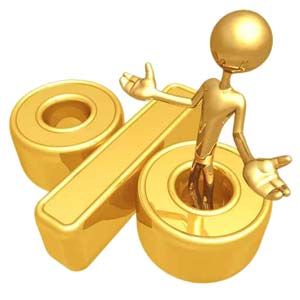Modern Horological Economics
With the ever increasing prices of new watches – seemingly stratospheric without limits – it’s worth taking a moment to look at what’s happening on the secondary market. Surely traditional collectors, enthusiasts and the nouveau riche can’t be absorbing all of the new production volume?
It is difficult to tell what is really happening with any certainty, but several things are clear: the manufacturers are increasingly tightening discounts; to the point where some major volume brands are pegged at 10% maximum. This improves margins, but it also makes the customer feel as though good deals for new watches are few and far between. Working in tandem with the decreased discounts is an increase in RRP – the real world price of a new watch has increased anywhere from 5 to 20% in the last few years alone. Even comparing identical models.

At the same time – at least in some places in Asia – there are significant numbers of new, current (or perhaps last year’s production) models being sold gray market at high discounts (40-50%) through various channels e.g. second hand dealers. This has been confirmed by several industry sources. One can only infer that the end retailer of these gray market watches must also be making money – surely it can’t be that the manufactures are losing money on these pieces?
Now let’s take a look at the second hand market. Conventional brick and mortar trade remains strong across the usual brands – Rolex, Patek and Panerai. The rest, it seems, are also going soft. There’s a huge number of new or ‘ex display’ Maurice Lacroixes, Perrelets, Corums and the like – mainly second tier brands – sitting in windows of retailers, often offered at significant discounts. So that supports the industry sources.
The less popular, or less voluminous brands – Lange is a good example – are taking serious hits in the secondary market. Both demand and supply are soft, and either pieces are going nearly new at nearly new prices – typically the high complications and hard to get items – or at a significant discount if older, regular production.
So what’s driving these dynamics? New world wealth – China, in the primary instance – is undoubtedly a large source of the demand for new watches. Rolexes, Omegas, Pateks and Panerais are flying off the shelves of dealers; to the extent that supply is adversely affected in other parts of the world, and in some cases, quality control, too. The demand drives global pricing; a necessity in these times of instantaneous communication to avoid arbitrage and optimize manufacture revenue. It also drives discount policy, which is linked to preservation of brand equity/ perception, and in turn linked to future pricing and demand. Resale prices on the secondary markets are a consequence of this too. Increased production for regular pieces – and sometimes overproduction – will mean increased supply and less demand for used pieces. Conversely, increased awareness drives demand for limited pieces – with correspondingly stratospheric price increases.
You would probably think at this point it would be simple to just buy the tasteful limited editions, hold for a while, and make a tidy investment profit, right? Wrong. Plenty of people are doing this – and the number of supposedly hard to get ‘nearly new’ or ‘mint in box’ pieces on the secondary market would support this, too. The net upshot? The only people who benefit from scarcity pricing are the dealers, who will both not offer discounts and probably add a healthy premium over list, too.
And we haven’t even talked about particular market tastes or changing fashions yet, either.
This can only lead us to a few conclusions:
1. What is emerging is a very strange pricing model: pay a premium for premium service (nice boutiques, warranty, perhaps servicing too); or pay a discount for possibly ordinary or poor service, no warranty, and no after sales support.
2. Prices are inescapably rising, probably to both maintain exclusivity in the face of increasing global wealth, and also to take advantage of that increasing global wealth.
3. If price alone is the sole consideration for a purchase – and in most cases of relatively simple, complication-free watches it can be – then the secondary markets are worth exploring.
4. However, if you’re going to buy a new, complicated piece, you really don’t have much choice: warranties and future service are important, and almost certainly restricted to manufacturers only. You have to buy from an authorized dealer or the manufacture directly.
5. If you’re selling, survey the prices: you might be shocked, in both directions. Global demand has no doubt increased across the entire watch market, driving up prices of certain models to silly levels; similarly, production of some lines has increased to the point where supply greatly exceeds demand, and the secondary market is flooded.
6. Watches are still a poor investment – risk is high, certainty is low, and there’s a cash holding cost involved that cannot be re-leveraged.
All in all, it signals that for most enthusiast collectors, the days of impulse buying are pretty much over: think what you want carefully before you buy new; the financial penalty of flipping later could be quite high. However, if you’re prepared to wait or take a risk with servicing, then by all means dive into the used market.
I know a number of collectors here are waiting to see what happens in the next few years. Perhaps it’s a consequence of pricing, or perhaps it’s a consequence of the current crop of product offerings. But what I do know is that we all hope that eventually demand settles down somewhat and pricing reverts to saner levels. MT
